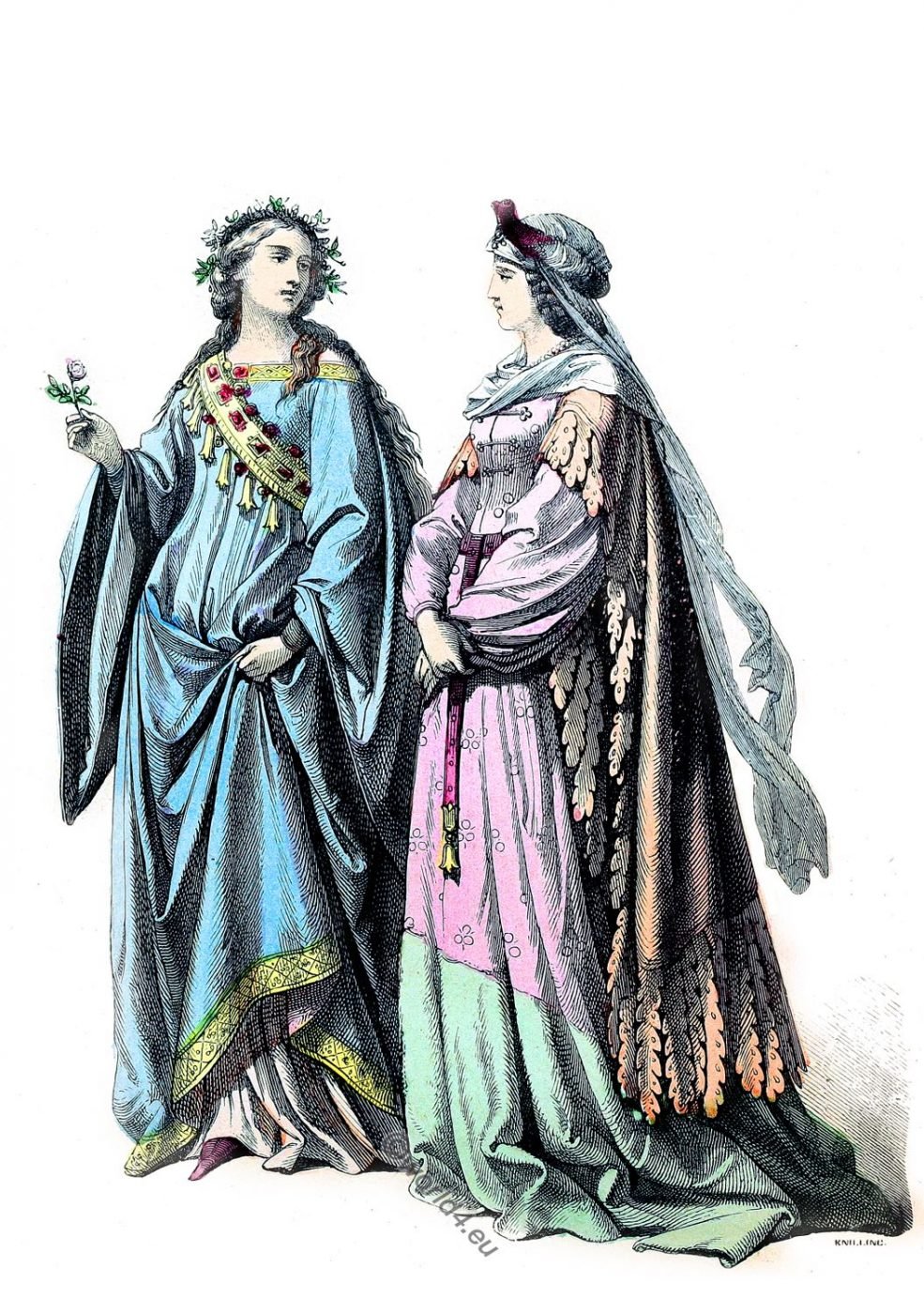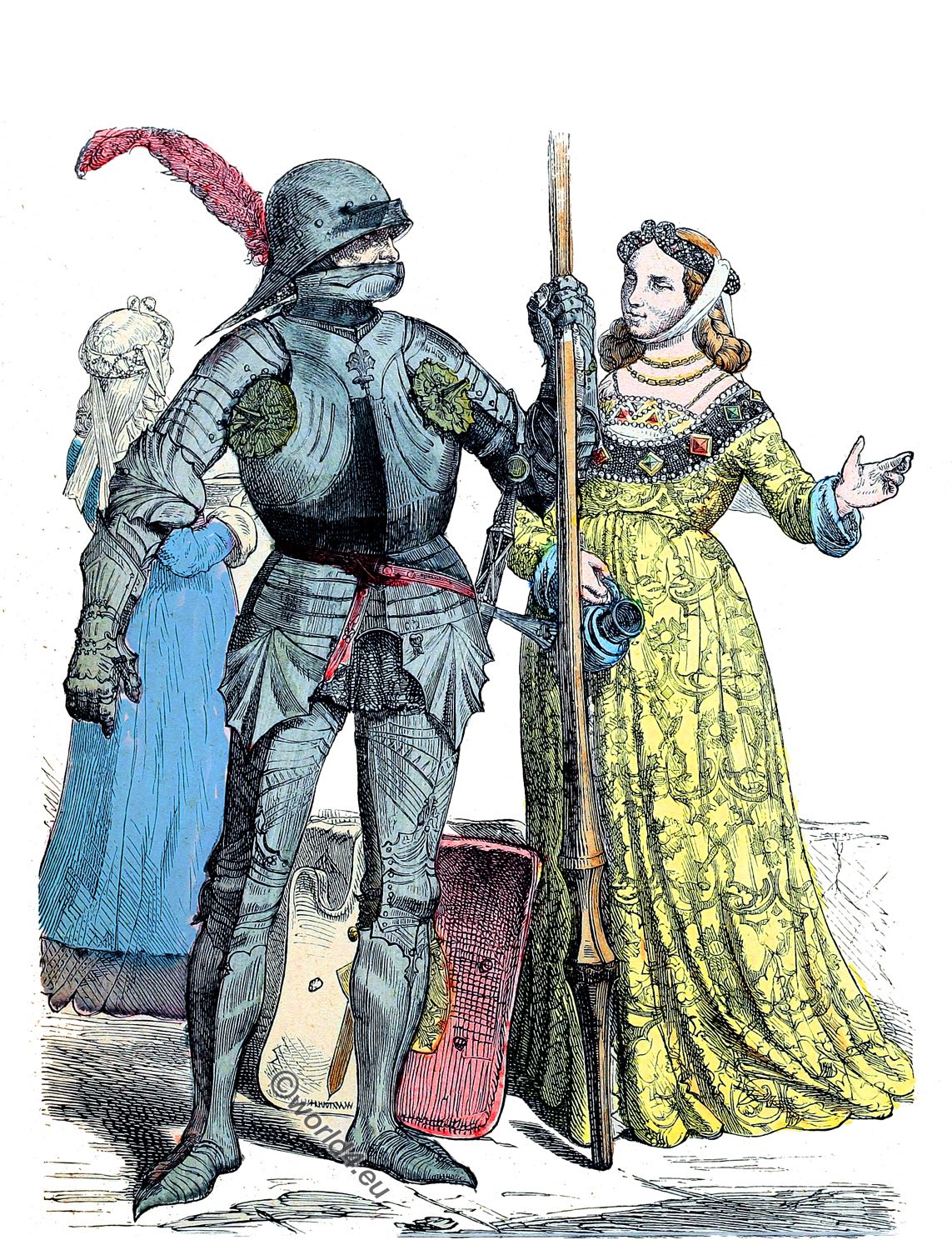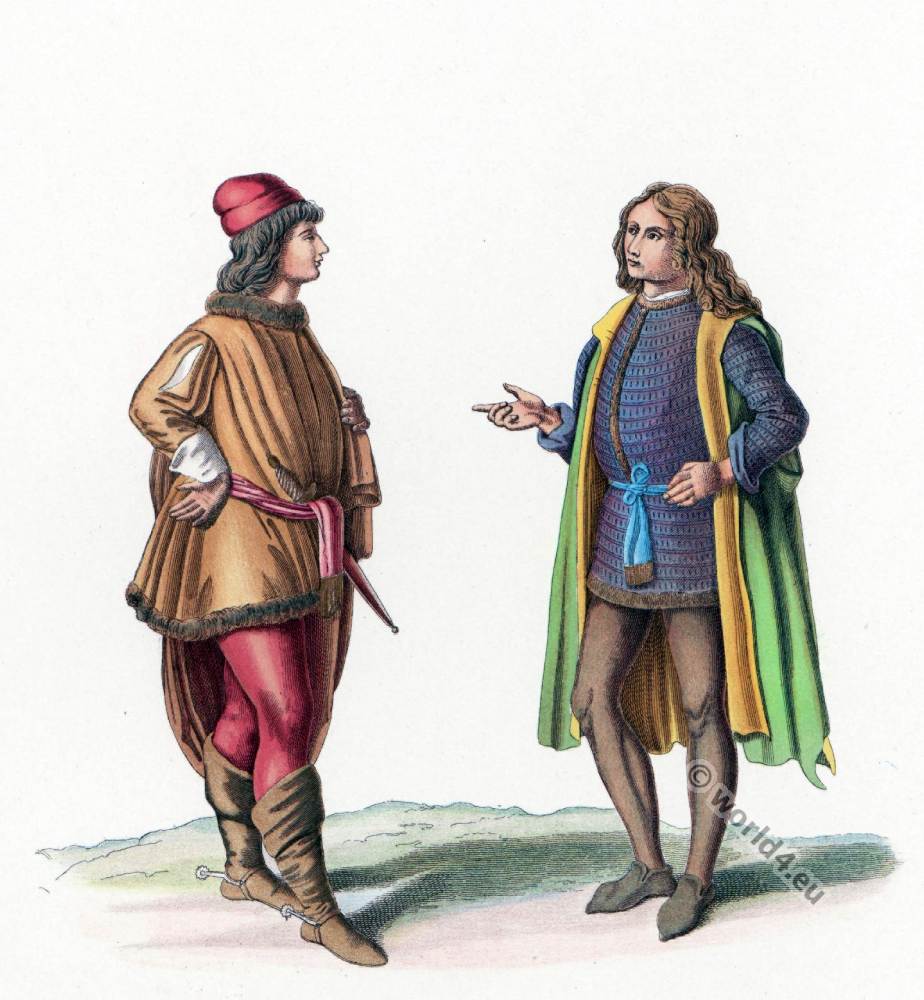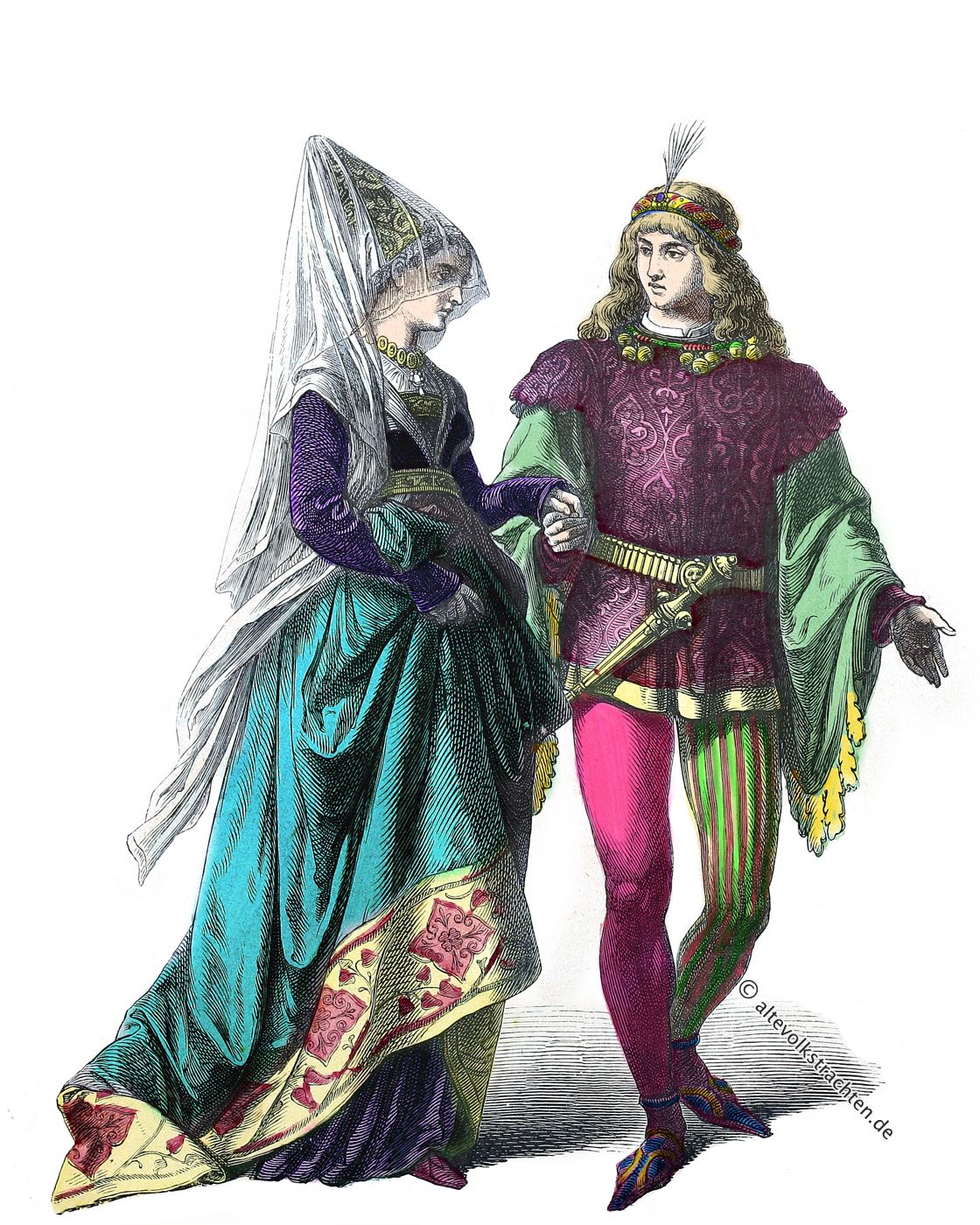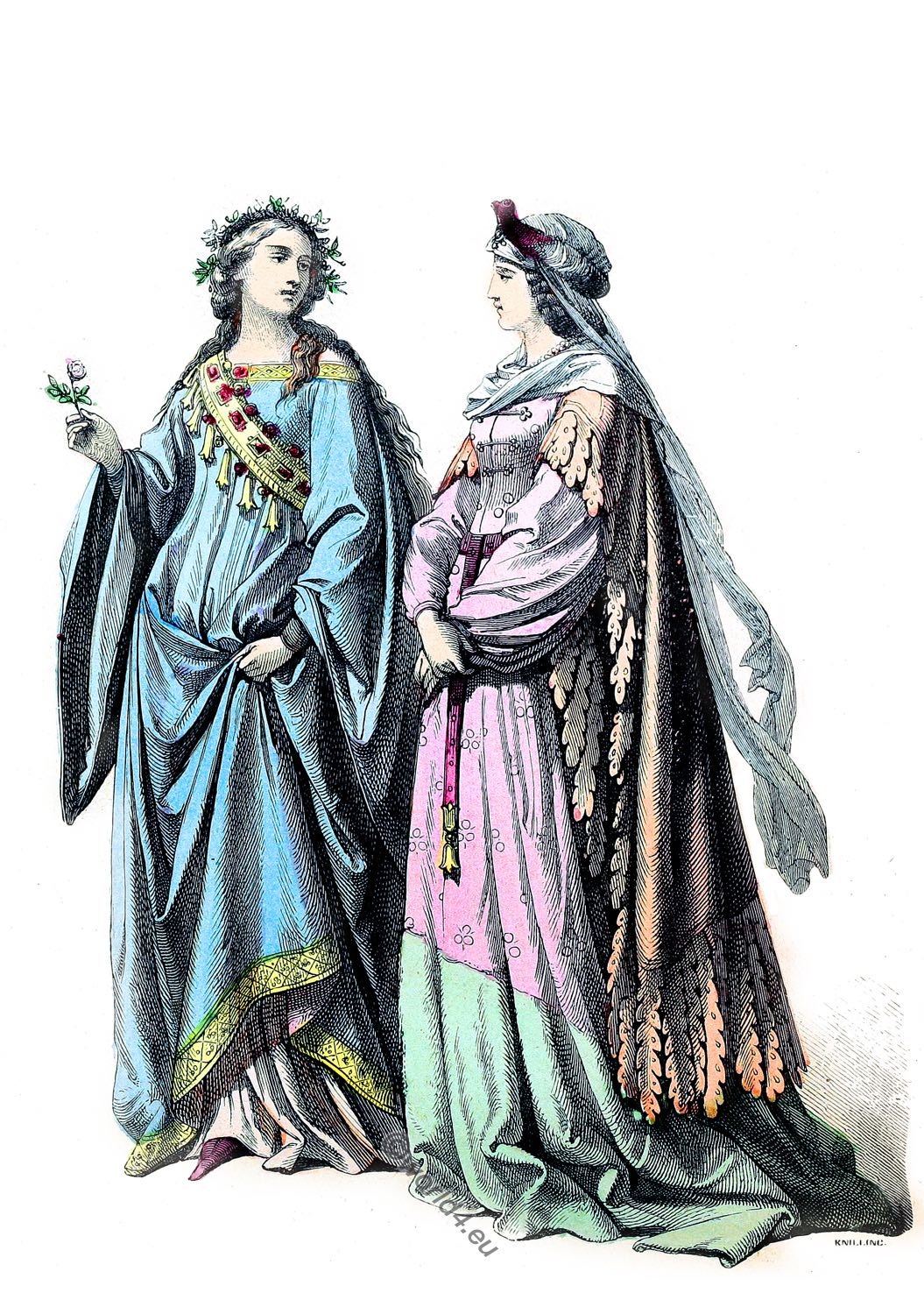The history of costumes. Thirteenth sheet. First half of the 15th century. Illustration by F. Rothbart. Munich picture sheet no. 437.
German court costumes. First half of the 15th century.
The left woman wears the houpland with bells. The singular fashion of wearing bells in this manner originated in Germany, and was one of the many fanciful details introduced at the time of Anne of Bohemia’s marriage in 1383; it was very popular at this period and for some time afterwards. It appeared in the cities in the second quarter of the 14th century and was preserved until the middle of the 15th century despite all the luxury laws.
German medieval bells (“Schellen”), and dagged costumes. The german “dagged fashion” (Zaddel) was a fashion that emerged in the 13th century in which clothing was cut into long serrations or stripes (so-called Zatteln) sometimes the edges were decorated with dagging (above woman on the right). This form of decoration was very popular between about 1380 and 1450. The edges of garments—hems, vents, the wide sleeves, collars—were cut deeply into scallops, leaves, or tongues.
The Zaddels, however, were not limited to the coat skirt, but were used on all garments, even the sleeves (often reaching to the ground), shirt sleeves and headgear were decorated with Zaddels.
At the beginning of the 15th century this fashion reached its peak, by 1470 it had completely disappeared and was only worn at fairs by jesters and jugglers.
Source: Munich picture sheet 1848 to 1898. The history of costumes. Published by Braun & Schneider. Royal court and university book printing house of Dr. C. Wolf & Sohn in Munich.
Related
Discover more from World4 Costume Culture History
Subscribe to get the latest posts sent to your email.

